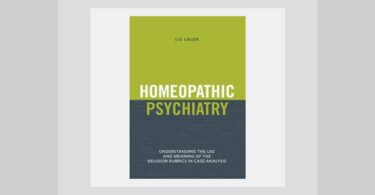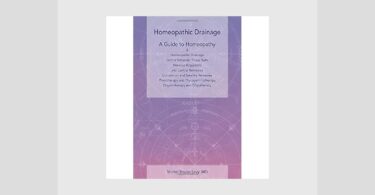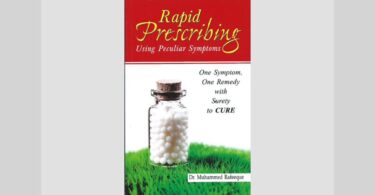INSC Iterative International Publishers, Karnataka, India email – [email protected]
Price: Rs.990/-, ISBN: 978-1-68576-295-7 – Paperback, 909 pages – January 2022.

Amid the current discussion on new educational policy, this book is a lucid and elegant exposition on the growth and development of homoeopathy in India and abroad. The possible ways for providing better education in homoeopathy for developing good clinical practice are emphasised in this book. Most of the developments are available on the internet now.
“Homeopathy – A Handbook for Students Teachers and Professionals in Homoeopathy” is by Dr. K. R. Mansoor Ali. It is informative about the scope of this profession across the globe. The essential questions commonly coming into the mind of a homoeopath are explained and answered.
The first chapter, ‘Reforms in Homeopathic Education’ stresses the need for changes in existing patterns of teaching, of both under graduate and post graduate curriculum. The author highlights the responsibilities of a teacher who spends 5000 hours in the classroom of a BHMS course.
He explains the need for good attitude and attire in the classroom for effective communication. The need for good presentation on each topic and methods to be adopted while making a presentation is given in detail. This will help the faculty improve the teaching method as defined in National Education Policy. The author states: ‘The attitude of teachers determines the attitude towards homoeopathy’,
He points out the existing errors in the mode of assessment for homeopathic medical colleges and suggests changes to be implemented, such as uniform salary structure on par with other medical systems. Feedback from the students on performance of teachers is another step for ensuring quality teaching in colleges.
The need for an introductory session for freshmen, is an innovative proposal from the author. Suggestions for new subjects such as research methodology, are also proposed. Medical courses after BHMS, both regular and distance, are explained in detail. Guidance for preparation for advanced studies is detailed in the book.
In the chapter ‘Carrier and placement in India and abroad’ he stresses the scope of homeopathy India and abroad. Registration and practice of homeopathy as per the rules and regulations of various countries are given in separate chapters.
The procedural steps to be followed for practicing in Australia, Kingdom of Bahrain, Canada, European Union, Japan, Malaysia, New Zealand, Sultanate of Oman, Qatar, Singapore, United Arab Emirates, United Kingdom and United States of America, are detailed in the book.
In the chapter ‘Clinic setup- how to generate a sustainable income through clinical practice’ he warns of the difficulties of a practitioner in the midst of free treatment programs.
In this book the author discusses homeopathic research from campus to collaborative, recommending the inclusion of research methodology in undergraduate courses.
In the section ‘case taking and repertorisation – applied aspects’ the author provides clear concepts and guidance to students and practitioners on the skills to be developed during case taking and use of various repertories. The chapter familiarises he readers with the commonly used software and various methods of repertorisation.
Chapter six concludes with a discussion about the spread of homeopathy in India, especially in Kerala. The steps taken by the government for introducing this system of treatment as a major modality in public health from 1937 is elaborated in detail.
Establishment of government bodies, research and other regulatory bodies, budgets utilised in various years for homoeopathy are also mentioned in this chapter. Description of websites, software, journals and education institutions across the globe is given in detail.
Current topics of discussion such as introduction pharmacology in the syllabus for BHMS and accreditation of distance learning for MD is discussed in the chapter. Pros and cons of these issues are analysed with justification.
Most of the chapters are systematically arranged for an easy understanding. The repetition of facts, especially statistics on institutions in homoeopathy is given in different sections. Discussions on case reports and book reviews on other publications of the author are also included.
The book is available at:
The book is a path for budding homeopaths and new students enrolled for this profession, to find a better future in homoeopathy. This book should be on the book shelf of homeopathic medical colleges as a resource for students and homeopaths.






Information needed on how to order the book, thanks, Francis Treuherz